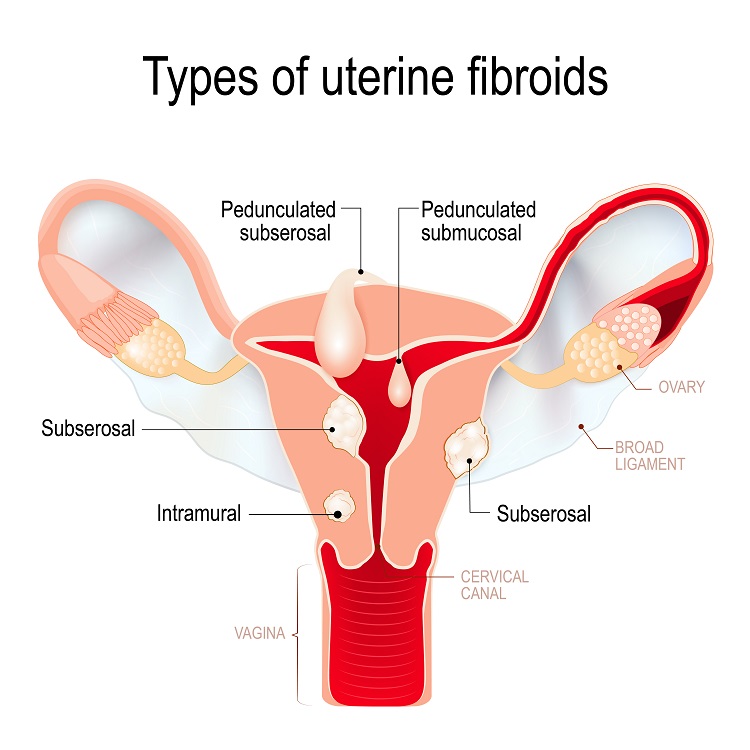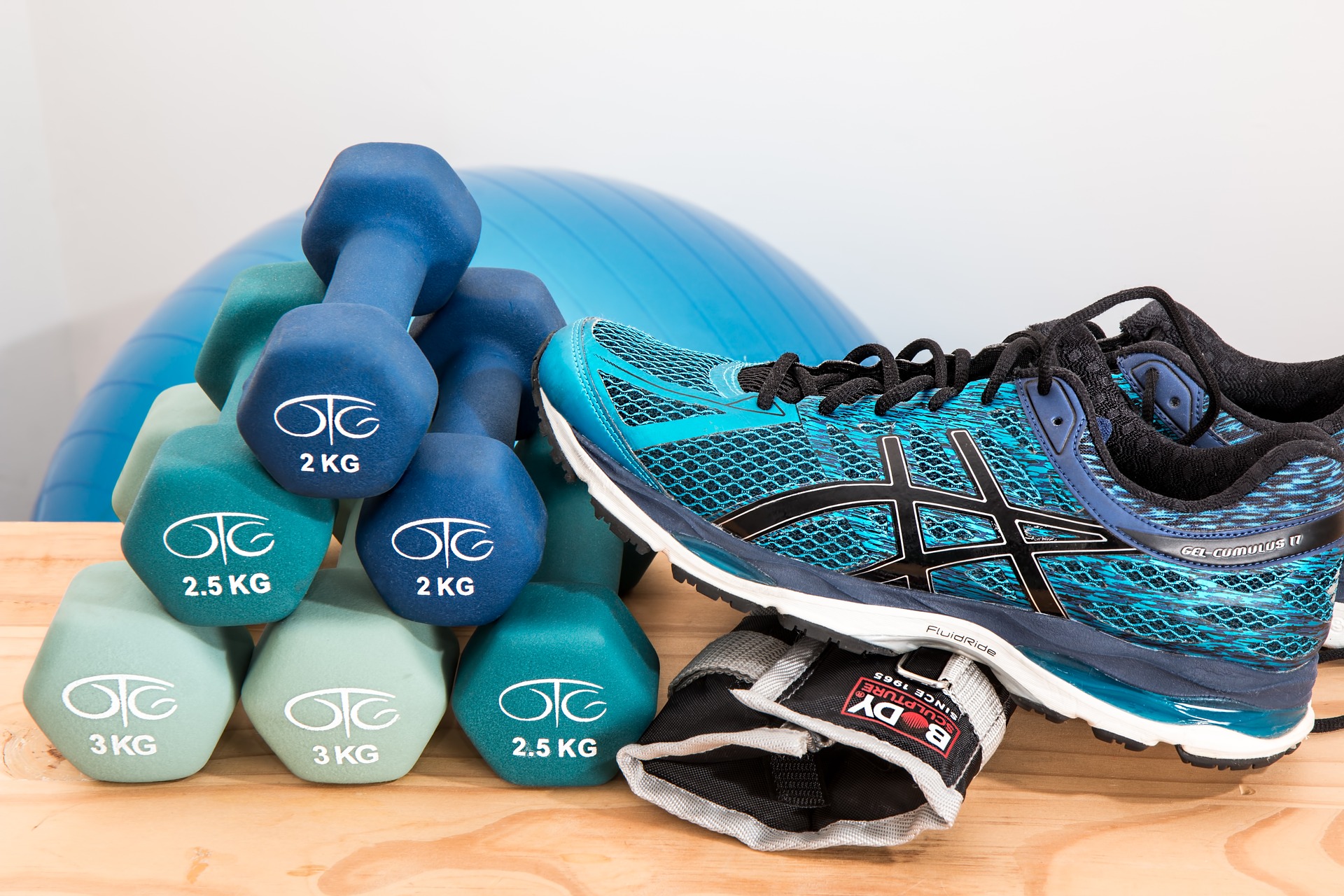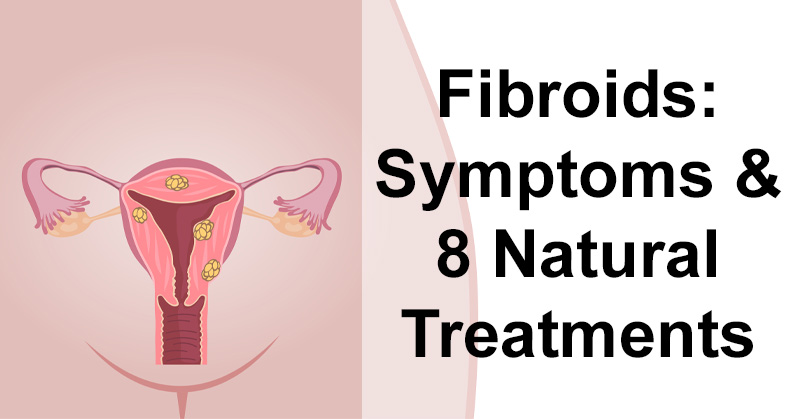Fibroids, which are the most frequently seen tumors of the female reproductive system, come in a variety of types. Intramural and cervical, for example, are common types of fibroids. It’s also possible to have multiple types of fibroids at one time. Fibroids can be painful and can cause heavy periods, but fibroids treatment methods can help the condition. Traditional fibroids treatment methods include pain relievers, anti-hormonal agents and surgeries. In some cases, fibroids treatment can include a hysterectomy. (1) However, there are natural fibroids treatment methods as well. Choosing the right foods for a fibroids diet, for example, is part of a solid, natural fibroids treatment plan. A fibroids diet includes leafy greens as well as other vegetables. Whole grains are also part of a fibroids diet. To learn about the details of a proper fibroids diet, read below.
Symptoms of fibroids include:
- Heavy or prolonged menstrual periods
- Abnormal bleeding between menstrual periods
- Pelvic pain
- Frequent urination
- Low back pain
- Pain during intercourse
- A firm mass, often located near the center of the pelvis, which can be felt by the physician

Types of fibroids include the following: (2)
1. Intramural
Intramural fibroids are the most common type of fibroid. They grow within the muscular uterine wall. If big enough, they have the ability to distort and stretch the uterus. They can also cause prolonged, heavy periods. Furthermore, they can cause pressure and pain in the pelvic region.
2. Subserosal
These are fibroids that grow outside the walls of the uterus sometimes press on the bladder. This can make it difficult to empty your bladder. Furthermore, these types of fibroids can cause backaches, due to pressure on your spine.
3. Penducluated
This variety grows on small stalks inside or outside of the uterus.
4. Submucosal
These fibroids grow just underneath the uterine lining. This type of fibroid is more likely to cause heavy, prolonged menstrual bleeding. They can also sometimes cause issues for women attempting to get pregnant. Submucosal tumors are not as common as other fibroid types.
5. Cervical
This type grows in the cervical tissue. However, they are rare in comparison to the other types of fibroids.
Here are 8 natural treatments for fibroids:
1. Avoid Foods that Make Fibroids Worse
Foods to eliminate or limit in order to reduce your risk for fibroids include: (3)
- High-Fat, Processed Meats: Fatty, processed meats are horrible choices for women deal with a fibroid. For example, foods like hamburgers and breakfast sausages can increase inflammation levels.
- Refined Sugar: Refined sugar can also increase inflammation. It may also make pain worse and lower immune function. In fact, studies have even shown that a high dietary glycemic index is associated with higher risk of uterine fibroids in some women. (4)
- Refined Carbohydrates: Refined carbs, like white bread or other products made from white flour, cause insulin levels to spike. Furthermore, they cause hormones to become out of whack.
- Alcohol: Over-consuming alcohol can most-assuredly make inflammation worse. Additionally, it encourages hormonal imbalances. Get your hormones back on track by eliminating alcohol.
- Caffeine: Too much caffeine is tough on your body. This creates too much work for your liver, meaning it can’t do as good of a job keeping your hormones balances. When you give your liver more work to do than it can handle, it isn’t going to do as good of a job at keeping your hormones in check. Drinking more than two cups of coffee daily could raise estrogen levels. (5) Cut down on caffeine to give your body the best fighting chance it has against fibroids.
2. Eat Foods that Heal Fibroids

To help keep fibroids at bay, try the following foods: (6)
- Organic Foods: Eating organic foods may help to prevent and shrink fibroids. This is because organic products are grown and made without the use of chemical pesticides. Pesticides may impact estrogen levels and other hormones.
- Green Leafy Vegetables: Green leafy vegetables have many anti-inflammatory effects. As such, they may discourage the growth of fibroids.
- Cruciferous Vegetables: Cruciferous vegetables help your liver detox. Additionally, they may also help balance estrogen levels. Research has shown that a plant-based diet, including greater intake of cruciferous vegetables, helps reduce the the development of uterine fibroids. (7) Try broccoli, cabbage, and kale.
- Beta-carotene Rich Foods: The human body turns beta carotene into vitamin A, which stimulates the growth and repair of healthy tissues. This can be helpful for healing a fibroid. For example, try carrots, sweet potatoes, or spinach. They are all great sources of beta-carotene.
- High-Iron Foods: Sometimes, a fibroid can cause a woman to lose more blood during menstruation. This can lead to anemia. To help replace iron lost due to increased bleeding, include iron-rich foods like legumes in your diet.
- Flaxseeds: Flaxseeds can help balance estrogen levels in the body, which can help shrink a fibroid. If you have fibroids, aim for at least two tablespoons per day. You can sprinkle flaxseeds on oatmeal or in your smoothies. Alternatively, eat the seeds by themselves.
- Whole Grains: Ditch the refined grains. Instead, choose healthier whole grains like millet, spelt, brown rice, buckwheat, rye and oats. Their benefits vary. For example, in comparison to refined grains, whole grains are higher in fiber, contain more minerals and tend to be much less processed.
3. Try Supplements that Aid in Fibroid Reduction
The following supplements have strong reputations for reducing fibroid growth and occurance. (8) However, be sure to speak to your doctor before starting any new supplements.
- Vitex (4,00mg 2 times daily). Vitex or chasteberry reduces estrogen levels. It does this by promoting the production of progesterone. For best results, however, you should take vitex for at least six months.
Flaxseed Oil (1 tablespoon daily). The essential fatty acids in flaxseed oil can help lower inflammation in your body, which may play a part in fibroid growth. - B-complex (50 milligrams daily). A vitamin B deficiency can deprive the liver of what it needs to help regulate estrogen levels.
- Progesterone Cream (1/4 teaspoon, days 6–26 of cycle). Applying progesterone cream topically can help correct low progesterone.
- Milk Thistle (150 milligrams 2 times daily). Milk thistle aids the body in liver detoxification, which can balance hormones.
4. Use Essential Oils

Thyme, clary sage and frankincense are fantastic essential oils for fibroid treatment. This is due to the fact that they all have the ability to help balance hormones naturally. In fact, studies show clary sage oil significantly lowers cortisol levels. Furthermore, it has anti-depressant effects. (9)
Combine these essential oils with a carrier oil. Then, rub the mixture on your lower abdomen. Repeat this two times daily.
5. Sip on Herbal Teas

Herbal teas may reduce inflammation and help balance certain hormones. For example, you might try chasteberry, milk thistle, yellow dock, dandelion root, nettle and red raspberry. These choices all have benefits for the uterus and reproductive system. (10)
6. Try Castor Oil Packs
Castor oil is also anti-inflammatory. And while there hasn’t been any scientific research to date that directly studies the impact of castor oil packs on uterine fibroid growth, it makes sense that castor oil packs could be helpful. In fact, a 2011 study showed that castor oil packs can help improve detoxification and decrease symptoms associated with constipation. (11)
7. Avoid Exposure to Environmental Toxins
You’ll want to steer clear of pesticides, herbicides, synthetic fertilizers, bleach, food preservatives, harmful cleaners (even certain eco-cleaners) and food dyes. Additionally, opt for natural, unbleached feminine care products. Also be sure to choose organic body care products and makeup.
8. Exercise

Research shows exercising regularly can help prevent fibroid growth before it starts. For example, according to one study, the more a woman exercises, the less likely she is to get uterine fibroids. (12)


